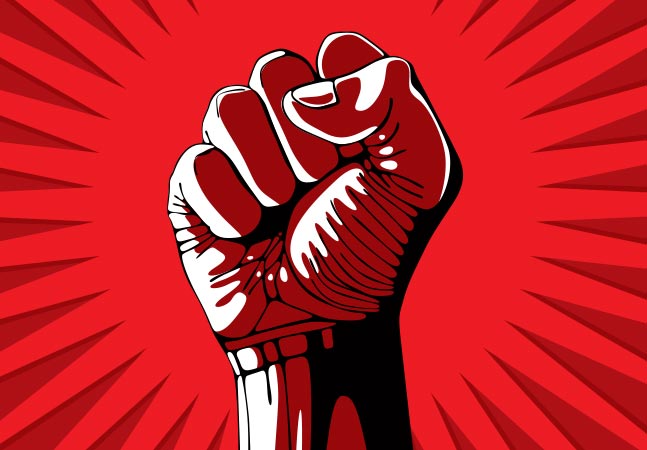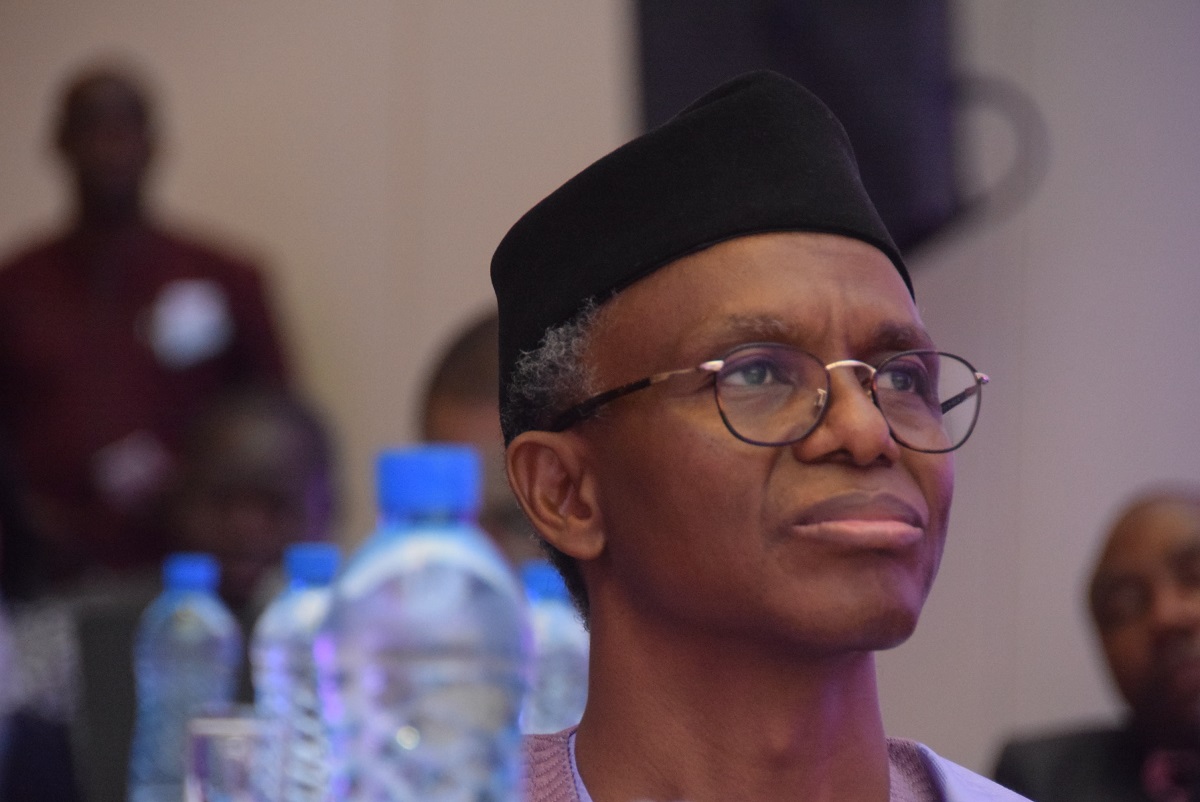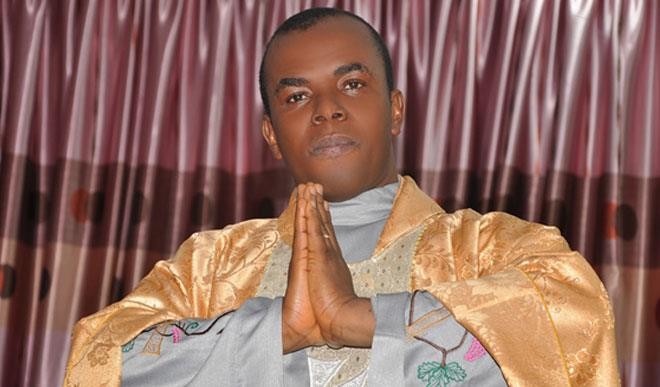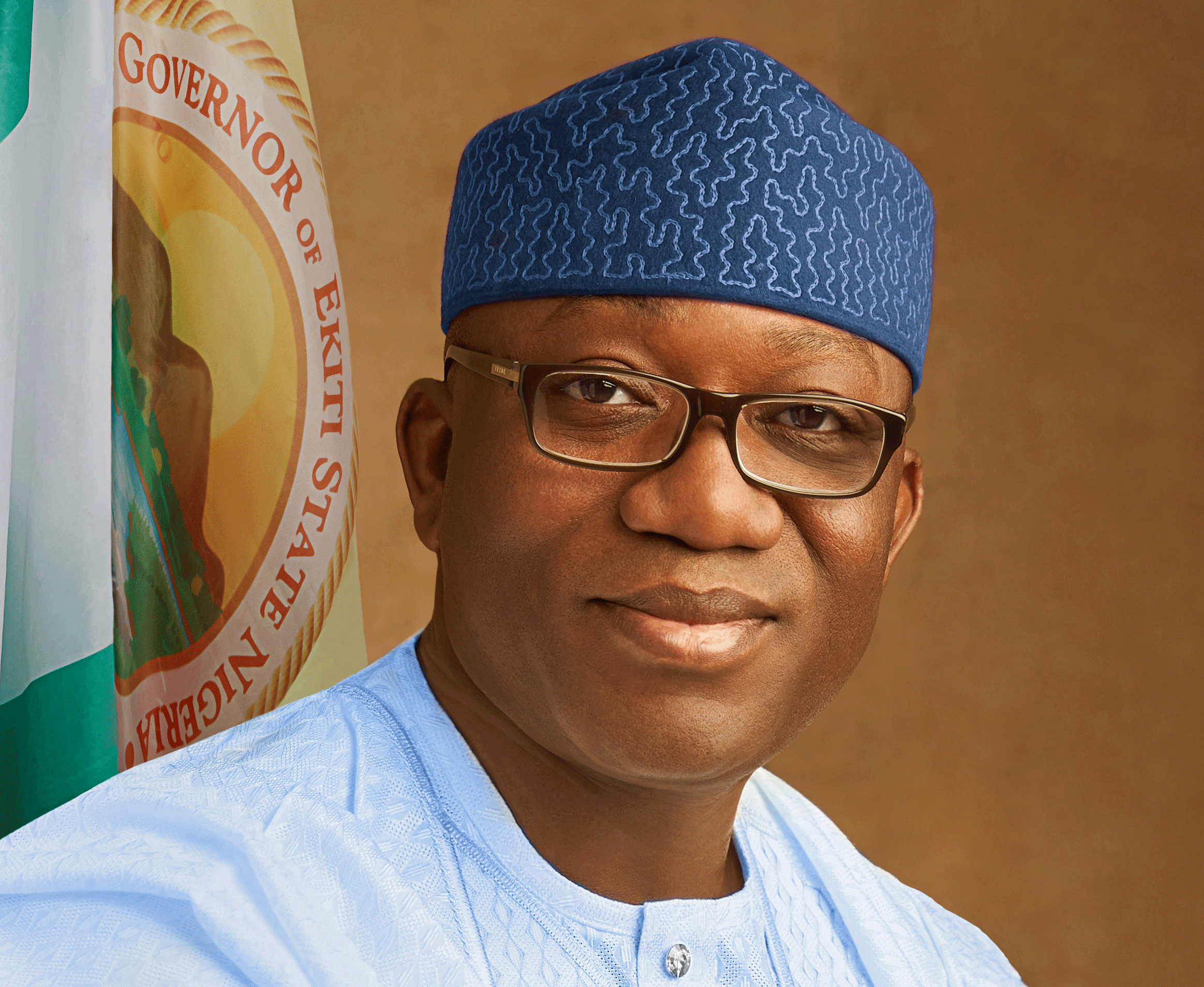This is not a tribute in the usual sense the word is used and as suggested by the title of this piece. Rather, it is an aspect of a story that has not been told in full, but which—I have now been persuaded—should, at least, be elaborated in some areas—for the benefit of the younger generations of the Nigerian Left. The opportunity I have now seized to do this partial elaboration, January 2020, is the start of the 75th year of existence, on earth, of one of the preeminent characters in that story and the 60th “birth-month” of an exceptional character in the story. The trajectory of my story starts from Lagos (1975) and runs through Ibadan, Ife, Ode Omu and Calabar. It then turns in the opposite direction.
A “complete” story-teller would, perhaps, have remembered that before Lagos there was an earlier brief encounter at the University of Ibadan in 1968, during the Civil War, and would then have suggested that it was Ibadan 1968 that helped facilitate Lagos 1975. Be that as it may, I think the story really starts from Lagos. It is the story of a revolutionary core of a revolutionary tendency within the Nigerian Socialist Movement and its larger family, the Nigerian Left.
The qualification of “tendency” and “core” with the word “revolutionary” should not just be taken as my style of writing. For, in a dialectical movement, a tendency can be higher or lower in quality than the average reading of the movement of which it is a part and the core of that tendency may also be lower or higher than the average reading of the tendency. When, in the early 1980s, it became necessary to give this core a name, we called it Revolutionary Directorate or RD. As for structure: My own reconstruction is that RD had full-members, alternate-full-members and associate members. The entire membership, that is, the aggregate of the three levels of membership, was never, at any time, up to 20. But this was not by design.
Of members of RD that are alive today, Comrade Biodun Jeyifo (BJ) and myself were full-members from foundation; Comrade Bene Madunagu and Comrade Kayode Komolafe (KK) rose, at different times, from associate membership to alternate full-membership. To simplify this narrative, I shall retain the name RD for this core from the time it was founded, in mid-1970s, although the name was used only relatively briefly in early 1980s. In the context of this narrative, the alternative name for “core” is “vanguard”: not just a vanguard but a vanguard in the original Leninist sense. We shall later in this narrative appreciate what a revolutionary vanguard is through a peep into the Revolutionary Directorate, RD.
Advertisement
I think we should move quickly to the attributes of this revolutionary core and what I claim as its concrete achievements—lest some readers, both young and old, start thinking that it was a “cult” or, worse still, a “terrorist” formation. It was neither. But, before going into attributes and achievements, we may complete the identification we have started: Biodun Jeyifo (BJ), a Nigerian, and a recently retired Harvard professor of literature, is the one we have referred to as “one of the preeminent characters”. He began the 75th year of his life on January 5, 2020. Before rising to become a Harvard professor, BJ had been, among other things, a student of the University of Ibadan and a lecturer in that University and at the Obafemi Awolowo University, formerly the University of Ife. Kayode Komolafe (KK), also a Nigerian, is the “exceptional character” mentioned above. He will be 60 years old on January 25, 2020. He is currently the Deputy Managing Director of ThisDay newspaper and a graduate of Biological Sciences, University of Calabar.
This piece is not an articulation or evaluation of the thoughts, ideas and views of Comrades BJ and KK. It is also not a record of their achievements and “exploits” in their respective fields, or their attributes and qualities as human beings. The easiest way to start to do the former, for anyone who wishes to do so, is to approach their newspaper columns which have run for several years. BJ has written a full-page weekly column, the Talakawa Liberation Herald in The Nation on Sunday for several years now. Before then the column ran for a couple of years in The Guardian on Sunday. KK, on the other hand, has run a full-page weekly (Wednesday) column, New Horizon, on the back page of ThisDay for several years. Before then he had worked in The Guardian and National Concord newspapers where he reported news and wrote commentaries. As for their individual achievements and qualities you also need not go beyond the Nigerian media—in the first instance. This piece, as we earlier said, is an aspect of the story of a revolutionary core of a revolutionary tendency in the Nigerian Socialist Movement and the Nigerian Left.
Comrade Biodun Jeyifo (BJ) had, in his column of December 1, 2019, mentioned our historic (even fateful) meeting in Lagos in the mid-1970s. He placed the decisive meeting in December 1974, but I am placing it in December 1975. We are however in agreement that it was in the month of December. Specifically, it was on Christmas Day of 1975. I emerged from the meeting confirmed or re-elected as Secretary of a revolutionary Marxist formation, the Anti-Poverty Movement of Nigeria (APMON) and he emerged as the new Editor-in-Chief of our journal, The People’s Cause. It will be correct to say either that the foundation of RD was laid on that day or, indeed, that RD was formed on that day. At inception, the entire membership of RD was two: BJ and myself. In retrospect, and taking a long view of history, it can be said that the 12-month “extraordinary engagement” in Ode-Omu/Ife axis from mid-1976 to mid-1977 was a school for RD—in addition to whatever else the engagement was.
Advertisement
Coming to what RD achieved, it will be safer and more appropriate to speak of “areas of landmark engagements” rather than “achievements”. Research will uncover several of the details and instances. The “areas” would include the active participation in the strengthening of the foundations and early development of a post-Civil War revolutionary, Marxist formation in the Nigerian students’ movement. (In 1975/76 the formation was headquartered in Ibadan, and, for a long time, it was the vanguard of the national students’ movement). RD followed this with the revolutionary conscientisation of peasants and other rural populations in an area stretching from Ode-Omu to Oogi, Ede, Oyo and Ogbomosho (in one direction) and to Ife, Ifetedo and Okeigbo (in another direction)—all in South Western Nigeria—between June 1976 and May 1977. This revolutionary conscientisation was a core element of the “extraordinary engagement” of 1976/77.
After the rural conscientisation came the “Ali Must Go” students’ protest of 1978 and its aftermath; the radicalization of Academic Staff Union of Universities (ASUU) in the early 1980s (during which BJ became National President) and—since then—the continuous struggle within it and by it; the formation, on revolutionary foundations, of the National Association of Nigerian Students (NANS) about the time of ASUU’s radicalisation; the long struggle that began with our reaction to the murder of Comrade Ingrid Essien-Obot, the German-born Secretary of the University of Calabar branch of ASUU in April 1981 and continued for more than 12 months. In the course of that offensive, RD waged a hard, but successful battle to have Comrade Bene succeed Comrade Ingrid, through a popular vote, as ASUU branch Secretary.
Comrade Ingrid was, at the time of her murder, an associate member of RD, and it was during the struggle over her death that KK rose from the General Secretary of the university’s Marxist students’ formation, the Movement for Progressive Nigeria (MPN), to its President. In my assessment, KK was one of the most severely tested as well as one of the most successful revolutionary cadres of the Nigerian students’ movement in the first half of the 1980s. And, of course, he was also one of the most selfless and most “faceless”.
I remember an episode after the battered corpse of Ingrid was discovered in her flat on the campus of the University of Calabar on Friday, April 24, 1981. (While she was the Secretary of ASUU branch, BJ was the National President and was based at Ife). One of our first reactions was to rush to the motor park to send a message through a commercial driver going to Lagos through Ife, and passing through the front of the University gate. The sealed letter contained just one short sentence: “Comrade Star is dead”. When BJ got the note, he did exactly what I expected him to do: jump into his Volkswagon Beetle car and start “racing” to Calabar. But he was confused: he could not remember if “Comrade Star” was Bene, my spouse, or Ingrid. He only knew who had died when he arrived in Calabar!
Advertisement
Other “areas of RD’s landmark engagements” would include the 1982 deployment of some RD members in revolutionary struggle outside our borders but within the West African region; the struggle both within and around the Political Bureau (1986/1987); the “June 12” political struggle (1993); the struggle in and by the Nigerian Labour Movement—first, in the early 1980s against the Nigerian state under a civilian President, Shehu Shagari and then between mid-1980s and late 1990s against the military dictatorship; and the long and arduous efforts to unite the Nigerian Left and establish a united revolutionary organization.
The Revolutionary Directorate (RD), as a vanguard, was a selfless segment of the Nigerian Socialist Movement and the Nigerian Left. It sought to defend, unite, and invigorate the movement and, in so doing, expand the frontiers of revolutionary and popular struggles in Nigeria (and beyond). But RD neither claimed nor asserted its role. It did not aim at becoming a “universal regulator” of revolutionary conduct or “enforcer of standards”. It did not “use” anyone – comrade, compatriot, or foot-soldier. It only assumed much more selfless – and often more “dangerous” – tasks than the average, but limited its individual personal consumption to the average, or below the average. RD understood that its effectiveness depended, in part, on its selflessness and ability to remain “faceless”.
If any member of RD found herself or himself in an official position in a popular-democratic formation or even in a state or private institution, such a member regarded the position as a revolutionary posting and her/his official duties simply as a set of minimum demands on her or his time, energy and resources. Beyond that minimum lies a limitless field. In certain periods, any material or non-material entitlements of an RD member beyond the earnings of an average worker went to RD. Indeed, in these periods, RD experimented with complete or near-complete collectivization of material resources, revolutionary duties, and housework (when we were in a rural commune). I learnt how to take complete care of babies in RD, with the babies of other comrades. Of course, those former babies are now parents.
The aggregate agenda of RD over the years included: Strengthening RD and its capacity to ensure minimum continuity and expansion of popular-democratic struggles across the country at all times; expanding alliances, collaboration and networking in the national movement of socialism and popular democracy; expanding popular-democratic, empowerment and socialist education among the toiling and working masses and all strata and segments of the population that suffer specific or general oppression; engaging in systematic research, information and documentation and building institutions and centres for this engagement; uniting organisations of popular-democratic struggle across the country; supporting and learning from revolutionary, socialist, popular-democratic and empowerment struggles in Nigeria, Africa, and the world; and remembering, at all times, in everything we do and mobilise others to do, that the ultimate objective is the self-liberation of all segments of the working, toiling and oppressed masses and the march to socialism and socialist humanism.
Advertisement
The most anxious moments in the life of RD which also recorded the most serious internal crises include those that occurred in the 1976/1977 “extraordinary engagement”; the 1981/1982 deployment in ASUU; the 1981 murder of Ingrid; the 1982 deployment outside Nigerian borders; my forced exit from the Political Bureau in December 1986 and my guerrilla-like forced (though brief) re-entry in early January, 1987; the 2010 discussions on the need to deal with the legacy of the “extraordinary engagement”, or to “settle accounts” with that legacy—to borrow Karl Marx’s language; and, not long ago, BJ’s anger that I was becoming too sentimental over his health.
Of these “anxious moments”, the most serious were the two major crises that took place during the “extraordinary engagement”. The first crisis led to my arrest and detention by my comrades and the second led to the dispersal of the commune (as constituted) after we narrowly avoided wiping out ourselves. The main cause of these crises, I can now affirm, was that we could not, in practice, consolidate our organization and programme at the level of our revolutionary idealism.
Advertisement
In January 2016 when Biodun Jeyifo “clocked” 70 years, a big 2-day seminar was held in his honour at the Obafemi Awolowo University (OAU). A book, Ogun’s Errant Warrior: Celebrating Biodun Jeyifo at 70, later emerged from the papers presented at the seminar. My own paper, Biodun Jeyifo in the Struggle for the Revolutionary Transformation of the Nigerian Society is Chapter 5 (pages 46-75) of the 17-chapter, 300-page publication put out by Kraft Books Limited, Ibadan. That paper, which has also been published in my book The Nigerian Left: Introduction to History (For Eskor Toyo and Biodun Jeyifo), is both a concentrated fraction of the RD story that is yet to be told in full and a personal tribute to BJ. I refer readers to these two publications and to a tribute, Saluting Bene Madunagu at 70, written by me and published in The Guardian of March 21 and 22, 2017. With these references as background, I shall end my narrative with a glimpse at the making of an exceptional revolutionary Leftist cadre, KK.
Comrade Kayode Komolafe (KK) was born on January 25, 1960 in Igbara-Oke, then in the old Western Region, but now in Ondo State. After his primary and secondary education at home he was admitted into the University of Calabar in the last quarter of 1978, at the age of 18, to study Biological Sciences. He came in as a full-time and resident student. He entered Calabar the same month my comrade-spouse, Bene Madunagu, and I were dismissed from the university by the military regime of General Olusegun Obasanjo. It did not take long for the Radical Movement on the campus and, through it, the Socialist Movement in Calabar to identify him as a rising radical democrat. We soon learnt that his radicalization started before he got to Calabar. He had more than a fair knowledge—for his age and level of formal education—of what was happening in Nigeria, in the Nigerian Left and in Calabar.
Advertisement
Kayode Komolafe soon got admitted into the Movement for Progressive Nigeria (MPN) which was then the leading Leftist students’ formation in the university. From there, he moved to the Calabar Group of Socialists (CGS) and a revolutionary tendency within it—the Democratic Action Committee (DACOM). As expected, the Revolutionary Directorate (RD) also noticed him. It was a rapid movement demanded by the situation in Nigeria and the battles the Nigerian Left and its various segments, including those in Calabar, were waging against the military dictatorship. In that type of situation every exceptionally bright and courageous Leftist enthusiast—especially a very young one—must be grabbed with both hands. The movement grabbed the then smallish, shy, intelligent, humble, kind and generous Kayode Komolafe whose “staying power” was striking. His young comrades and compatriots first called him “Komo!” and then “KK”. The movement followed their lead.
In summary and for the record: KK joined the organized Leftist movement in Nigeria in 1979, at the age 19 but approaching 20. By the end of 1980 he had become a leading member and General Secretary of MPN. The latter linked him to the national students’ movement which was then laboring to form a new organization, the National Association of Nigerian Students (NANS). He also soon became a leading activist of DACOM, and a member of the Calabar Group of Socialists (CGS). By the time Ingrid Essien-Obot was murdered in Calabar in April 1981 KK had become a “friend” of RD; and between his final degree examination in mid-1982, and the fourth quarter of that year when he moved to Takum in then Gongola State, but now in Taraba State, for his national youth service, Kayode Komolafe (KK) was outside Nigeria on a revolutionary assignment.
Advertisement
At a point in this foreign assignment, KK’s family back home in Igbara-Oke became worried that their son had not come back home to prepare for his national service. They therefore sent his younger brother, Gbenga, to come to Calabar to find out what was happening, or rather to confirm his safety. Gbenga naturally came to me and Bene. But we, ourselves, were becoming worried. We, however, confidently told the young man to return home, that his brother had gone to Lagos to sort out some official matters and would be arriving Igbara-Oke in three days. We did not give him any reason to suspect not just that his brother was outside Nigeria but that we had had no contact with him since he left Calabar about two weeks earlier! To cut a long story short, KK returned to Calabar the day after Gbenga’s departure, gave his report, went to Igbara-Oke, and then to Takum.
In December 1982, Bene Madunagu and I paid a visit to Kayode Komolafe (KK) in Takum where he was serving. In the second half of 1983 he finished his service and moved to Lagos with a “stop” at Ife to see Biodun Jeyifo (BJ). KK later joined The Guardian in Lagos. In late 1983, Bene moved from Calabar to Ibadan to complete her Ph.D programme. I myself later left Calabar for Ife/Ibadan, then to Lagos to join The Guardian. By mid-1985 RD had reconstituted and moved its headquarters from Calabar to Ife.
To conclude: What is the current status of RD and what does it do now? The answer to this question will necessarily include a general, even if tentative self-assessment of a 45-year engagement. This will have to wait for another opportunity. Then, I hope, it will be possible to say more on the “extraordinary engagement” and “rural Conscientisation” of 1976/1977.
Madunagu, mathematician and journalist, writes from Calabar, Cross River State, Nigeria.
Views expressed by contributors are strictly personal and not of TheCable.
Add a comment







